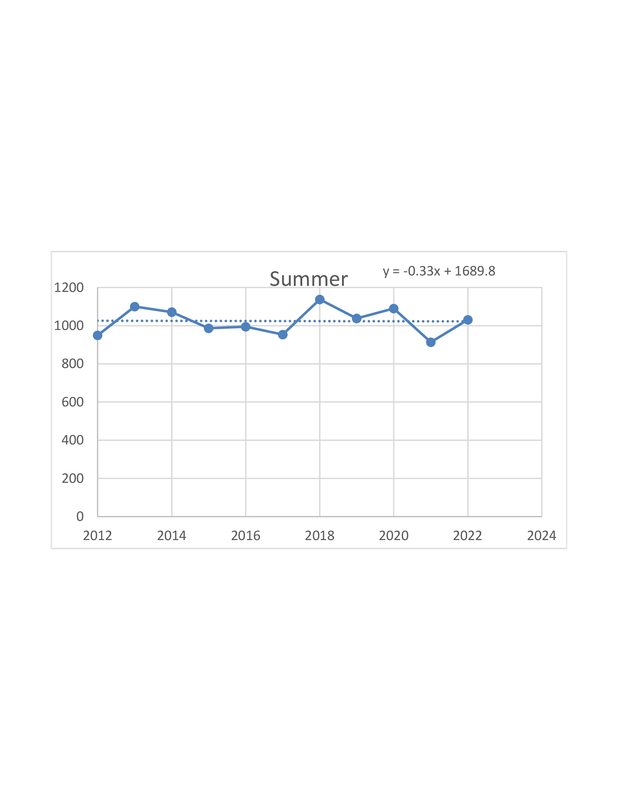Oliver90owner wrote: ↑Wed Oct 05, 2022 11:19 am
As nobody seems to have any idea of output degradation, due to lichen growth (like shown) - and washing cars with de-ionised water is totally irrelevant - I intend just giving the pics to my neighbour and only suggest his generation is being adversely affected.
What I do know is that at the farm (with a few MW of solar) I occasionally visit, the panels are washed 3 or 4 times a year by a gang who spend the best part of a week on the job at each visit. I only know they use water from the farm borehole and it is filtered multiple(?) times. I don’t know if the final wash water is de-ionised or if they use any chemicals, but I intend to find out, if possible.
Clearly the professional installations know the benefits of maintaining clean panels - serious money being made by small increases of output. They already monitor the different sections, but not sure how how that relates to output at the panel level. Single failed, or failing, panels are relatively easily located/isolated, apparently. Drones are used to locate failing panels, but not sure if they are used at that particular solar farm.
I’m also going to enquire at the Mallard Pass solar farm development - but am not very confident of getting any useful information from that lot.
The output from our system markedly increased after it was cleaned the first time (which was around 6 years after installation) Very hard to put an accurate number on the improvement though, because of the general level of variability, but if I had to guess then I'd say it was around 5% or so. Subsequent panel cleaning always seems to give a bit of a boost, but it's very hard to determine how much of that is just from the panels being cooled by the water or just the normal variation. All I can say is that there was a very slight downward trend in output, year on year, from 2014 until 2020, then a step improvement when the panels were cleaned of about 5%, that seems to have been maintained. I've no doubt that the downward trend would have increased if we'd just left it, as once the lichen has got a hold then it provides a rougher surface for other dirt to adhere to.
An improvement of 5% just about makes cleaning worthwhile. We're still on the FiT, so 5% in increased output is worth about £60 or so. I did once see a much bigger drop in performance when something like a gull left a dinner plate sized deposit on one panel. Luckily it was a lower panel, and the pressure washer jet just reached far enough to get it off. I've no idea what our window cleaner would charge for just doing the windows, but he has just increased his prices and told me that this autumn's window and solar panel clean will now be £95 (was £90 last year). The panels don't take long to clean, perhaps 20% of the time here's here, so cleaning them probably costs around £20 over just getting the windows cleaned. Probably a bit marginal in terms of any increased output, year on year.
It may be that ground mount solar farms have more issues with bird droppings than roof mounted panels. There's a long array of panels set at a steep angle alongside a road embankment not far from here (think they run some sort roadside equipment) and they very often have streaks of bird droppings down the panels, as I think birds sit on the top edge of the panels.
The window cleaner we use now only cleans the panels the same way as the windows, with detergent foam brush thing on his long pole (not the rotating one he had to use initially) followed by a rinse and squeegee. Whatever muck is on them now tend to wash off fairly easily, unlike before they had the "deep clean" in 2020. Back then the guy went over the panels maybe three or four times trying to scrub the stubborn stuff off. As mentioned before, it will be getting the lichen off that will be the problem, no idea how it manages to stick to surfaces so well but there are still slight marks on the glass of our panels were it was starting to gain a foothold.
Might be worth investing in a window cleaning pole, though, to make this a DIY job. It might pay for itself in 5 years or so of regular use, depends on the size of the array. The poles aren't massively expensive, our house would need one about 8m or 9m long to get to the ridge from ground level. Looking around you can buy a telescopic solar panel water pole kit for around £180, including the pole, water fed brush, hose fittings etc.
25 off 250W Perlight solar panels, installed 2014, with a 6kW PowerOne inverter, about 6,000kWh/year generated
6 off Pylontech US3000C batteries, with a Sofar ME3000SP inverter
